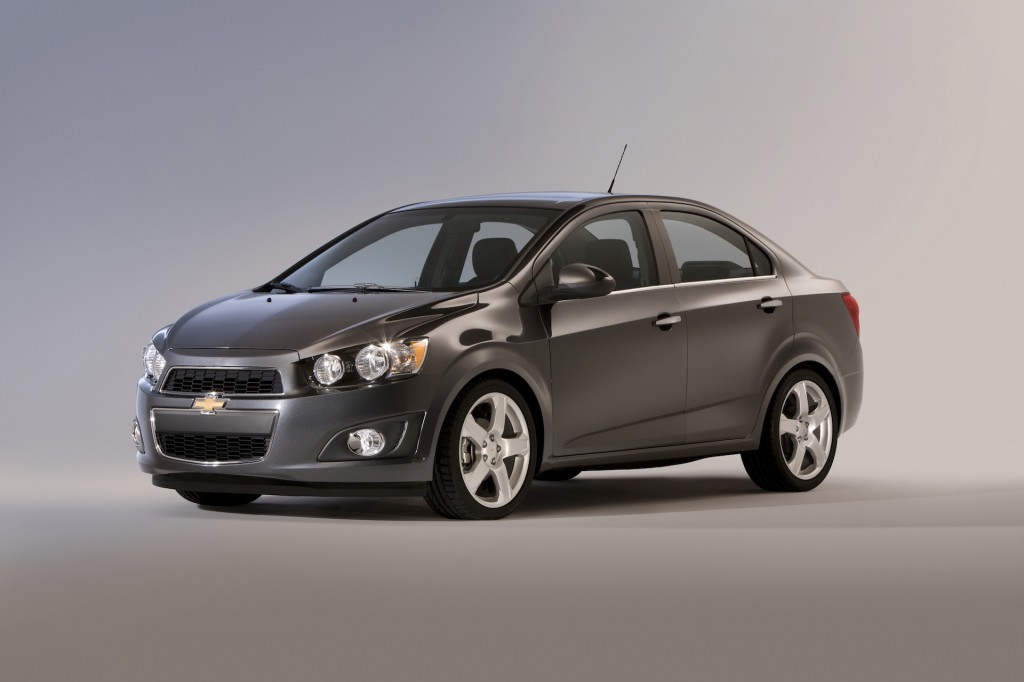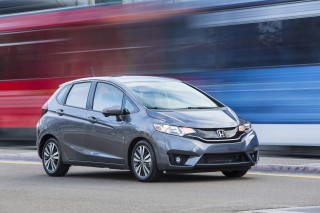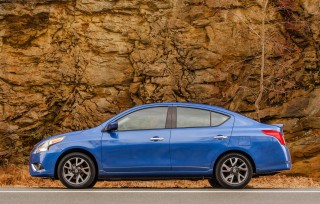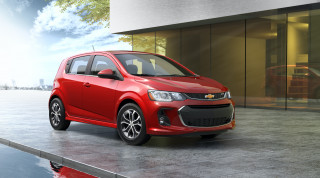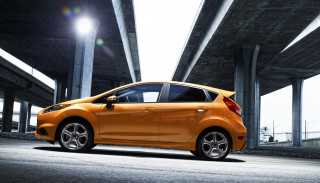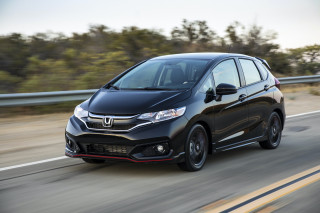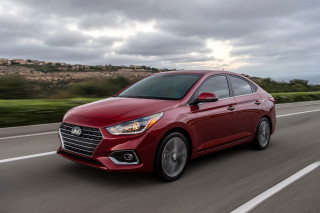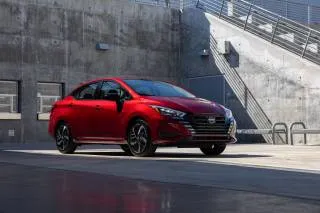Likes
- Excellent seat comfort
- Turbo 4-cylinder sporty and efficient
- Good noise suppression
- Smooth, comfortable ride
- Steering feel is good
Dislikes
- Brake feel can be soft
- Base 1.8 engine harsh, gutless
- No standard USB port
Buying tip
features & specs
Despite its five years largely unchanged, the 2016 Chevrolet Sonic remains stylish and comfortable, and it scores big not only on safety ratings, but also driving fun.
The 2016 Chevrolet Sonic hatchback and sedan remain strong contenders, giving the brand new credibility in cars smaller than compact sedans. Sonic sales have flattened as gas mileage worries take a back seat to surging sales of smaller SUVs—including the Chevy Trax that's built on Sonic underpinnings with all-wheel drive added.
Entering its fifth year on the market largely unchanged, the 2016 Chevrolet Sonic faces twin threats. First are stronger competitors in the subcompact sector, including an all-new Honda Fit and an updated Ford Fiesta. Second are U.S. gas prices that remain relatively low, reducing interest in smaller, more fuel-efficient cars.
The 2016 Sonic remains stylish—if not so fresh—as it was back in 2012 and enjoyable to drive. It's a very usable small car with more interior space than many competitors, and it's a pleasant place to spend time. For 2016, the sole updates are three new colors and a couple of equipment changes: the top LTZ trim level now comes with automatic transmission as standard, and mid-level LT models now include the Chevrolet MyLink infotainment interface.
The Sonic's looks aren't quite as fresh as they were in 2012, but the hatchback especially is nicely proportioned and accented to avoid the box-on-wheels look of some small cars. While the front styling, front doors, and wheelbase are shared by both sedan and hatchback, the two models differ considerably behind the center pillar. The sedan has conventional rear doors, but the handles for the hatchback's back pair are hidden in a black trim panel—supposedly to give it the look of a coupe.
The interior sports a typically Chevrolet twin-cockpit design but with an edgier design that includes a "motorcycle inspired" instrument cluster. The controls and passenger accommodations both offer high-quality materials and finishes, and adults in the comfortable and roomy front seats shouldn't be unhappy. Adding another pair of adults to the rear seats will require some negotiation to get enough leg room in the back, but shoulder and head room are fine.
While the Sonic hatchback isn't quite up to the level of the ultra-adaptable and cavernous Honda Fit, with its latest "Magic Seat," the Chevy subcompact can approximate a small moving van with its rear seat backs flipped forward—and the sedan benefits from the same function, making its trunk into a cavernous well for long objects that can extend from the taillights to the front seatbacks.
The base Chevrolet Sonic LS is fitted with a conventional 1.8-liter inline-4, but the optional turbocharged 1.4-liter inline-4 improves acceleration, higher EPA ratings for gas mileage, and it's simply a hoot to drive. The 1.4 turbo is offered on the LT and LTZ models; either engine can be ordered with a six-speed manual or a six-speed automatic transmission in the LS and LT.
With strong, sturdy road manners, the Sonic's driving enjoyment is reinforced by an exceptionally well weighted electric power steering setup, a point Asian competitors have an issue pinning down. Recently, GM has excelled in producing quiet cars. The Sonic is no exception, but it's not quite as far ahead on that front as it was when it launched.
The 2016 Chevrolet Sonic received top safety scores from both the IIHS and federal safety officials. The Sonic is rated at five stars overall (the highest possible score), and gets five stars in every other rating except rollover, for which it gets four out of five stars. Chevy added an optional crash-avoidance system in 2014, and all models have 10 airbags and blind-spot warning mirrors as standard.
Chevrolet worked diligently to avoid the grim "econocar" look when designing the Sonic, and that extends to its equipment too. Good luck find a base models with painted steel wheels and plastic covers—they don't exist. And every Sonic has Bluetooth connectivity, steering-wheel audio controls, air conditioning, and keyless entry.
The mid-level LT model adds the Chevrolet MyLink system, new last year, includes a 7.0-inch touchscreen display, hands-free connectivity, streaming audio (along with Pandora and Stitcher apps) and voice recognition, along with remote start as standard on automatic models. An optional Connectivity & Cruise package gives the LT a USB port and cruise control as well.
The Sonic LTZ top trim comes standard with the 1.4-liter turbocharged 4-cylinder and automatic transmission. Last year, Chevy added 4G LTE connectivity and the ability to create an in-car wi-fi hotspot into the Onstar package. Finally, the sporty-looking Sonic RS model comes only as a hatchback. Although it offers exactly the same powertrain as the standard car, its appearance is racier, with changes to the front fascia, unique wheels, a tuned exhaust, and a variety of interior trim items (sport seats, special steering wheel, aluminum pedals).
Across the board, the Sonic manages good fuel numbers in nearly endless configurations (12, according to the EPA), which is important in the subcompact segment. At the top end, the 1.4-liter inline-4 paired to a six-speed manual manages 29 mpg city, 40 highway, 33 combined. The least fuel-efficient model? The Sonic RS hatchback manages 25/33/28 mpg, according to the EPA.
2016 Chevrolet Sonic Styling
The 2016 Chevy Sonic's design remains crisp and stylish even after five years, especially the hatchback.
It's no longer as fresh as when it launched was five years ago, but the 2016 Chevrolet Sonic still looks modern and avoids the boxy, bland "econocar" look of many small cars with large interior volumes. It's a nice balance of bold and conservative, and it looks every bit like a Chevrolet. (With luck, memories of its grim, insipid, and unsatisfying predecessor, the Chevy Aveo, have all but evaporated by now.) At the front, a horizontally split grille is flanked by round headlights with a sporty "projector" look under clear covers that wrap back along the fenders.
We find the five-door hatchback to be a more cohesive design—with its angled window line ending in a truncated tail—than the sedan. The stylists hid the handles for its rear doors in the black trim connecting the roof pillar and door to execute a slightly coupe-like surface, and the hatchback's short rear and longer front overhangs combine to make it feel sporty.
More traditional rear doors, a large trunk, and a stretched roof separate the sedan from its five-door counterpart. These ingredients, while adding more utility, don't seem hewn from the same cloth and highlight the sedan's roots as a modification of the Sonic hatch.
Inside, Chevy's traditional twin-cockpit look is carried out from the dashboard through into the doors. The dash flows into a V-shaped center stack before reaching a console that wraps its way around the front seats. Behind the steering wheel, a "motorcycle-inspired" instrument cluster—with a speedo as the only prominent gauge—stands proud atop the steering column. (The gauge cluster's monochrome display is one place where the Sonic is beginning to show its age.)
Even after a few years since a major redesign, the Sonic's interior feels more expensive than it ought to. And outside, Chevy is still fitting alloy wheels to each and every Sonic rolling off the line for American consumption.
2016 Chevrolet Sonic Performance
The 2016 Chevy Sonic benefits greatly from the optional 1.4-liter turbo engine, which is peppier and more efficient.
The 2016 Chevy Sonic's engines and transmissions haven't changed over its five-year life: There's a base 1.8-liter inline-4 and an optional 1.4-liter turbocharged inline-4, both rated at 138 horsepower. Each is offered with a 6-speed automatic or a choice of manual gearboxes, with five speeds for the base engine and six speeds in the turbo.
We found the Sonic to drive well for the segment, thanks to good steering feel, and the RS model offers an even sportier feel from a lowered and tuned suspension and lower gear ratios (though it has no other performance upgrades to engine or transmission). Its tuned exhaust system also makes for a sporty soundtrack—even if any performance differences are slight at best.
We strongly recommend the turbocharged 1.4-liter option, which is not only more fun to drive but also delivers higher fuel-economy ratings to boot. It has more torque, and it's more refined and flexible—elevating the Sonic to more of a premium feel, against a base 1.8 that is, frankly, rough and unrefined. It gets coarse and boomy at higher revs, and can feel tapped out under heavy loads.
If the turbo 1.4 gives the Sonic just a hint of sport sedan feel, the base 1.8 busts it right back down to rental-car econobox territory. Our sole sore point with the turbo is its throttle response is sometimes delayed. On the other hand, it's a small price to pay for a six-speed manual this fun to drive; it delivers accurate shift action and short throws combined with a clutch that's spot on and impossible to get wrong.
Still, automatics will likely make up the majority for both engines, The automatic for the turbo offers up- and down-shift buttons on the side of the lever for added sportiness. Leaving it in "Drive" is just fine—though you should know it may end up shifting more often to stay in its most efficient power zone.
In motion, the Sonic holds the road well and has decent feel through its electric power steering. (Numb steering is a weakness among many of the Sonic's Asian competitors.) About the worst thing we can say about its driving dynamics is that all the Sonics we've driven have braked fine, but have had mushy pedal feel.
2016 Chevrolet Sonic Comfort & Quality
The 2016 Chevy Sonic is quiet, handles decently, and can fit four adults inside—not all competitors can say that.
The 2016 Chevy Sonic offers room for four passengers, with enough leg room to accommodate adults front and rear (with a bit of negotiation) and plenty of shoulder and head room in all four seats. The seats are consistent front and rear—not always the case in subcompacts—and two adults will fit comfortably up front. Adults can fit themselves into the rear, too, but they'll have to negotiate with the folks up front to get sufficient leg room, and they'll still find they may be short on head room.
When it launched five years ago, the Sonic had one of the best-insulated cabins in the class. Competitors are catching up, but passengers will find their ride pleasantly quiet. The ride is smooth, and road and engine noise are muted. We'd avoid the largest 17-inch wheel and tire option that's fitted to LTZ and RS models—which are noisier and rougher-riding—if options on those models aren't must-haves. If a quiet and calm subcompact is a priority, stick with the Sonic's mid-level LT trim for the most isolated ride.
You won't be left wanting for places to put your things in the Sonic thanks to its never-ending bins, trays, and compartments to hold every single one of your personal items. That is unless you're a rear-seat rider. The situation in the second row isn't nearly as generous.
The Sonic offers surprising cargo volume too, and the rear seat folds down not only on the hatchback but also the sedan, opening a cavernous luggage space. The hatchback has a remarkably large 19 cubic foot cargo area, making it possible to accommodate long packages and still close the hatch. The sedan boasts 14.9 cubic feet of trunk space, which is the same size as the Nissan Versa sedan's trunk, although the Chevy has a slightly bigger, more useful opening.
While the Honda Fit (all new last year) remains the flexibility and cargo king among small hatchbacks, the Sonic remains better than average. It also has a hidden storage area underneath the high load floor that's large enough to hold a laptop bag.
2016 Chevrolet Sonic Safety
The 2016 Chevy Sonic is an IIHS Top Safety Pick and gets all-but-perfect scores from the NHTSA too.
The 2016 Chevrolet Sonic received top safety scores from both the IIHS and the NHTSA. The Sonic is rated at five stars overall (the highest possible score), and gets five stars in every other rating except rollover, for which it gets four out of five stars.
The IIHS rated this year's model a Top Safety Pick, giving it the top rating of "Good" on every test. Those include not only the moderate-overlap front crash, side crash, and roof-crush tests, as well as its seats and headrests, but also the new and tougher small-overlap front crash test—which has tripped up many smaller vehicles, and some larger ones too.
The Chevrolet Sonic comes standard with 10 airbags. Blind-spot mirrors were fitted on all trim levels a few years ago, and in 2014, Chevy added a new optional safety package that bundles a lane-departure warning system and forward-collision alerts. A rearview camera is also available on models fitted with the MyLink infotainment system.
2016 Chevrolet Sonic Features
The 2016 Chevy Sonic has always been ahead of the pack on infotainment features, but others are starting to catch up.
The 2016 Chevy Sonic is now the oldest vehicle in Chevrolet's small-car lineup, since it's bracketed by two all-new models: the Spark minicar and the Cruze compact sedan. With the Spark below it as the least-expensive entry, there's no totally stripped-down Sonic econocar version.
Even the base LS model, with its 1.8-liter engine, comes standard with air conditioning, steering-wheel audio controls, keyless entry, and Bluetooth connectivity. Our sole gripe is the lack of a single USB port as standard equipment.
The mid-level Sonic LT is the volume seller. It has the 1.4-liter turbo engine as an option, which we strongly recommend for its peppiness and better fuel economy. For 2016, the LT now includes the Chevrolet MyLink infotainment interface as standard. It includes not only a 7.0-inch touchscreen but also voice recognition, streaming audio capability and the apps that permit that (Stitcher and Pandora), along with hands-free connectivity.
The LT also adds a six-speaker audio system, including SiriusXM satellite radio, plus an auto-up/auto-down power window for the driver and power heated mirrors. Models with automatic transmissions also come with remote starting capability. A Connectivity & Cruise package adds cruise control and a USB port.
At the top of the Sonic lineup are the more luxurious LTZ and the sportier RS. The Sonic LTZ adds larger 17-inch alloy wheels, cruise control and fog lamps as standard, along with heated front seats upholstered in leatherette. While it has no engine or transmission changes, the Sonic RS comes with slightly lower gear ratios and a tuned exhaust, along unique alloy wheels, a more aggressive front fascia, and a variety of interior upgrades. Of those, the sport seats are most important, along with a flat-bottomed steering wheel—though we question the real-world performance improvements offered by pedals made of aluminum.
As of last year, the Sonic's OnStar offered a 4G LTE data plan, with the ability to create an in-car wi-fi network. A navigation system is optional on most Sonic trim levels.
2016 Chevrolet Sonic Fuel Economy
With the 1.4-liter turbo engine, the 2016 Chevy Sonic will deliver real-world gas mileage in the mid-30s.
The 2016 Chevrolet Sonic has a breathtaking 12 different variants of body style, engine, transmission, and trim level listed on the EPA's fuel-economy website. In reality, it's not nearly as complicated as that. The bottom line: If you order the more efficient 1.4-liter turbocharged engine, we found the Sonic will deliver 30 to 35 mpg in real-world use, depending on driving style.
The most fuel-efficient Sonic is the 1.4-liter turbo with the 6-speed manual, rated at 29 mpg city, 40 highway, 33 combined. But go for the 6-speed automatic, as most buyers will, and you'll still see 27/37/31 mpg. If you opt for the base 1.8-liter four, it's rated more fuel-efficient with the 5-speed manual at 26/35/30 mpg; the 6-speed automatic knocks that down to 24/35/28 mpg.
Oddly, the Sonic RS—while it has the same 1.4-liter engine and transmission options as the regular Sonic—gets lower ratings, perhaps due to aerodynamic changes in the bodywork. It's rated at 27/34/30 mpg with the 6-speed manual and 25/33/28 mpg with the automatic, no better than the base model.
We strongly recommend the upgrade to the 1.4-liter engine. Not only is it more fuel-efficient, it's peppier and more fun to drive. It's also worth noting that the turbo—unlike many earlier such engines—doesn't require premium fuel, but is quite happy on regular unleaded gasoline. While the base 1.8-liter engine costs less, it drinks more fuel. It's also less fun to drive, so we think the payback is pretty clear.
